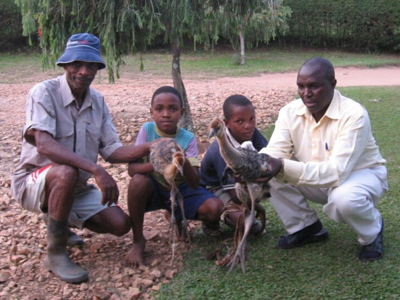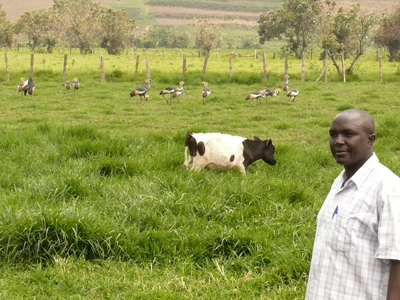Editor’s Note: We received an email from Jimmy Muheebwa, Uganda Crane and Wetland Conservation Program Manager, about a recent milestone in his country for the protection of the Endangered Grey Crowned Crane. By working together, the government and conservationists in Uganda are committing to reducing threats to the species, with the ultimate goal of preserving Grey Crowned Cranes for generations to come. Following is Jimmy’s report, which – we think you will agree – gives us all hope for the future!

A national symbol, the Grey Crowned Crane represents the independence of modern Uganda, and continues to play an important role in traditional Ugandan culture and folklore. These iconic cranes are also indicators of environmental health, choosing less disturbed wetland habitats for breeding, and contribute to valuable birding tourism in Uganda.
More than three-quarters of the world’s Grey Crowned Cranes live in Uganda and Kenya in East Africa, but despite the cultural, ecological, and economic importance of this species, its population has plummeted over the last 3 to 4 decades from over 60,000 to an estimated 13,000. As a result, Grey Crowned Cranes are now categorized as Endangered, meaning that the species is likely to become extinct if no serious mitigation measures are taken.
Uganda is one of the few African countries to initiate a Species Action Plan to save our remaining Grey Crowned Cranes and reverse the declining population trend. The process began in 2009 with funding from the Whitley Fund for Nature through the International Crane Foundation/ Endangered Wildlife Trust partnership. Delegates from Uganda, Kenya, and South Africa met in Entebbe, Uganda to design a process to address threats to Grey Crowned Cranes. My appointment in February 2015 by the government of Uganda, through the Ministry of Tourism, Wildlife and Heritage, as the Uganda Crane and Wetland Conservation Program Manager launched the conservation effort in Uganda. The Species Action Planning process for Uganda both followed and incorporated the actions outlined in the draft International Grey Crowned Crane Single Species Action Plan developed under the African-Eurasian Migratory Waterbird Agreement (AEWA):

First, we categorized information about biology, taxonomy, threats and their causes, and information gaps and actions to address them into the following threats:
• Threats directly causing reduced adult and juvenile survival;
• Threats causing a high degree of habitat loss, fragmentation and degradation;
• Threats causing reduced breeding success and reproductive rates.
Second, we designed four strategic actions for the Uganda Species Action Plan:
• Implement activities that enhance active conservation of cranes and their habitats by reducing adult and juvenile mortality of Grey Crowned Cranes;
• Enhance conservation of Grey Crowned Cranes through reduced loss, fragmentation and degradation of habitats;
• Fill knowledge gaps about the ecology of the Grey Crowned Cranes;
• Support the conservation of Grey Crowned Cranes through implementation of alternative livelihoods.
Third, we identified priority actions for immediate action against:
• Wetland degradation;
• Crane capture/hunting/trapping for home use, sale and or traditional use;
• Collision with power lines and communication lines;
• Unnecessary human disturbance and proximity to breeding sites.
The planning team advanced a strong need to have a National Crane/Species Working Group to coordinate and catalyze the plan’s implementation and monitor its implementation and effectiveness. A full-time coordinator, based in a research institution or conservation organization, would take charge of the day-to-day operations of the Species Working Group and act in close cooperation with the government and the AEWA office. The Species Action Plan was submitted in July 2015 to the Ugandan Ministry of Tourism, Wildlife and Heritage for approval, and we are awaiting their decision.
